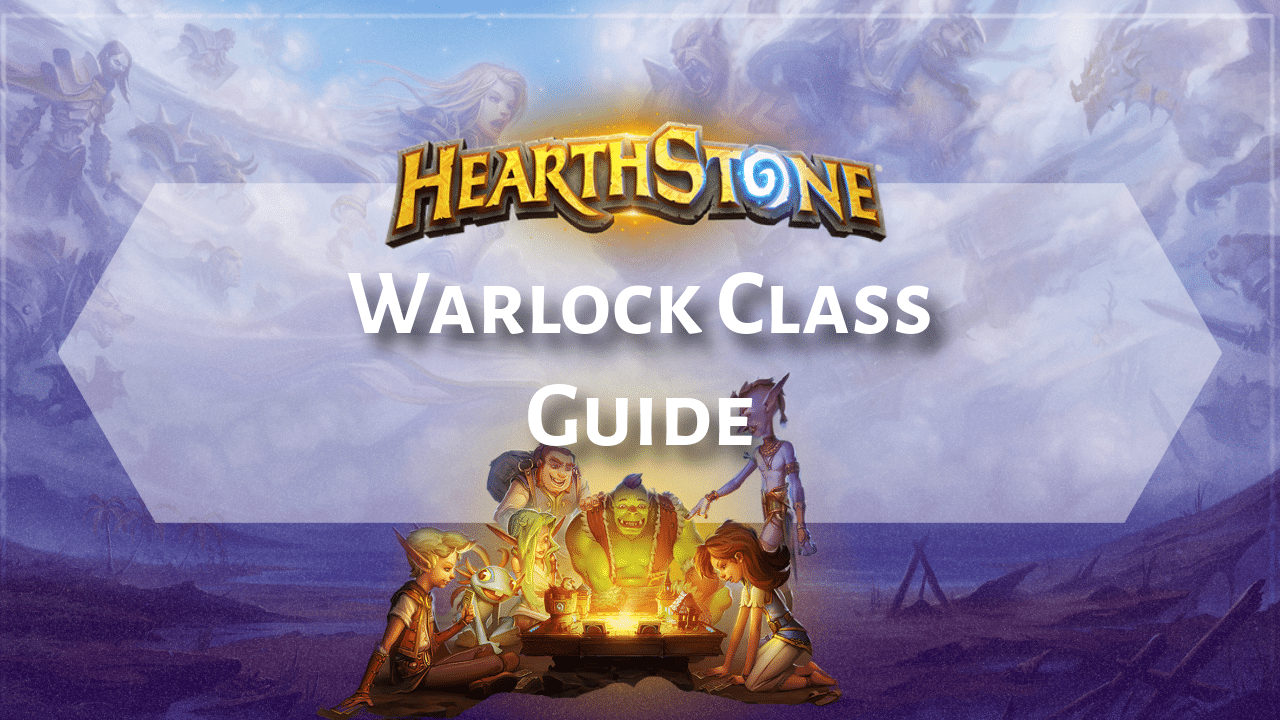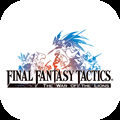
Hearthstone Warlock Class Guide: Introduction to the Warlock Class
Warlocks in Hearthstone are spellcasters who wield Shadow and Fire magic, often embodying a dark and sinister theme. They thrive on powerful but often self-destructive abilities, drawing strength from forbidden knowledge and demonic forces. The default Warlock hero is Gul’dan, while Nemsy Necrofizzle serves as an alternate, purely cosmetic hero option. Warlocks are defined by several core mechanics, the most notable being their willingness to sacrifice their own health for powerful advantages, most evident in their Life Tap hero power.
This self-damage theme extends to various cards that trade health for card draw, minion summoning, or spellcasting benefits. Warlocks are also deeply connected to Demons, being the only class with class-specific Demon minions as part of their basic set, with many cards providing synergy with this minion type. Another hallmark of the class is the Discard mechanic, where certain cards require the player to discard others from their hand, sometimes triggering additional effects or benefiting from discarded cards. Lastly, Warlocks excel in Area-of-Effect (AoE) damage, possessing numerous spells that clear enemy minions efficiently, such as Hellfire, Shadowflame, and Twisting Nether, making them formidable in controlling the board.
Core Mechanics
The Warlock hero power, Life Tap, is a defining feature of the class, costing 2 mana and 2 health to draw a card. This ability provides Warlocks with a consistent source of card draw, allowing them to include stronger minions and spells instead of relying on dedicated draw cards.
Unlike classes that need to run weaker minions like Novice Engineer for card advantage, Warlocks can opt for higher-statted options like Chillwind Yeti due to their built-in draw. Life Tap enables both aggressive and control-oriented strategies—aggressive decks can quickly refill their hand after playing multiple low-cost cards, while control decks benefit from finding the right removal or threats at the right time. While the self-damage aspect might seem like a drawback, Life Tap is often considered one of the strongest hero powers in the game, providing significant tempo and resource advantages depending on the matchup.
Warlocks are characterized by their ability to manipulate life, often trading their own health for powerful effects at reduced mana costs. This theme is evident not just in Life Tap but also in class cards like Flame Imp, a 1-mana 3/2 that deals 3 damage to the Warlock upon being played, and Hellfire, a 4-mana spell that deals 4 damage to all characters.
This willingness to sacrifice health for board presence and card advantage is central to the Warlock playstyle. Additionally, Warlocks are closely associated with Demons, a unique minion tribe within the class. These demons often have powerful stats or abilities, such as Voidwalker (1 mana 1/3 with Taunt) for early defense, Doomguard (5 mana 5/7 with Charge and a discard effect) for mid-game aggression, and Lord Jaraxxus (9 mana 3/15 that replaces the hero) as a late-game powerhouse.
Many Warlock decks revolve around demon synergy, with cards that enhance or interact specifically with Demons. Another major Warlock mechanic is Discard, where certain cards require the player to discard others for powerful effects. Soulfire, a 1-mana spell that deals 4 damage but discards a random card, and Doomguard are classic examples of this mechanic. While discarding cards can be a risk, some strategies turn it into an advantage by using cards like Silverware Golem, which is summoned when discarded, or Malchezaar’s Imp, which draws a card whenever a card is discarded, allowing Warlocks to mitigate the downside and build effective discard-based decks.
Strengths and Weaknesses
Warlocks possess several key strengths that make them a formidable class. Their early game is particularly powerful, with cost-effective minions like Flame Imp and Voidwalker allowing them to establish board presence quickly. Zoo Warlock, a popular archetype, takes advantage of this by swarming the board with cheap, high-impact minions. The discard synergy further enhances their early tempo by enabling cards like Silverware Golem to be summoned for free, creating explosive starts that overwhelm opponents.
In addition to their strong early game, Warlocks have access to some of the best AoE board clears in the game. Hellfire deals damage to all characters, Shadowflame destroys a friendly minion to unleash its attack as AoE damage, Defile can repeatedly damage and clear minions in a chain reaction, and Twisting Nether outright destroys all minions on the board. While some of these spells come with drawbacks like self-damage or requiring a minion sacrifice, they allow Warlocks to regain control against wide boards.
Another major strength is their superior access to card draw. Life Tap ensures a steady flow of resources from the early to late game, reducing the need for dedicated card draw minions or spells and allowing Warlocks to include more impactful cards in their decks.
However, Warlocks also have notable weaknesses. Their reliance on Life Tap and self-damaging cards often results in a lower health total than other classes, making them particularly vulnerable to burst damage from combo decks and sustained aggression from fast-paced opponents. To counteract this, healing effects are highly valued in many Warlock decks.
Another drawback is the randomness of the Discard mechanic. While discard effects can be powerful, losing crucial resources like removal spells, key minions, or combo pieces can lead to inconsistent outcomes. Additionally, Warlocks running aggressive Zoo decks are highly dependent on maintaining board control. If their board is wiped out by an opponent’s AoE spells, recovering can be difficult since many of their low-cost minions are ineffective when played individually. As a result, Zoo Warlock can struggle against classes and archetypes with strong board clears, making it a high-risk, high-reward strategy.
Common Deck Archetypes
Warlock decks come in many archetypes, each leveraging the class’s core strengths in different ways. Zoo Warlock is an aggressive deck that floods the board with cheap, efficient minions, using Life Tap to sustain pressure. The goal is to dominate the early game and push for victory before the opponent stabilizes. Some versions emphasize discard synergies with Malchezaar’s Imp and Silverware Golem, while others prioritize strong standalone minions like Flame Imp. Budget Zoo Warlock is a common entry point for new players due to its reliance on mostly common and rare cards.
Control Warlock focuses on surviving the early and mid-game with board clears like Hellfire and Twisting Nether, using Life Tap to maintain card advantage. The deck typically features powerful late-game threats such as Lord Jaraxxus, Mountain Giant, and Twilight Drake. Since Warlocks often sacrifice their own health, healing effects like Drain Soul are crucial to staying alive. Handlock, a classic Warlock archetype, revolves around maintaining a large hand size to discount Mountain Giant and boost Twilight Drake’s health. It uses taunt minions like Sunfury Protector and Defender of Argus to protect against aggression and can include combo finishes with Leeroy Jenkins, Faceless Manipulator, and Power Overwhelming.
Discard Warlock builds around the discard mechanic, using cards that discard others for powerful effects. Soulfire provides cheap removal while potentially summoning Silverware Golem for free. Malchezaar’s Imp helps offset the downside by drawing cards when discards occur, allowing for aggressive early-game plays. Cube Warlock centers on Carnivorous Cube, which destroys friendly minions—often Doomguard or Voidlord—to summon multiple copies upon death. This creates overwhelming boards that can be used for aggression or defense.
Imp Warlock is an aggressive deck focused on summoning and buffing Imps. Fiendish Circle and Wicked Shipment generate wide boards, while cards like Infernal Shrine and Shady Bartender boost their stats. The goal is to quickly overwhelm opponents with a swarm of buffed Imps. Murloc Warlock takes a similar approach but focuses on Murloc synergies, using low-cost minions that boost each other’s attack and health to apply early pressure.
Weirder Warlock archetypes include Combo Warlock, which stalls the game to set up a one-turn-kill combo with Arcane Golem or Leeroy Jenkins, Power Overwhelming, and Faceless Manipulator. Malygos Warlock revolves around Malygos’s +5 Spell Damage, using Life Tap to find damage spells like Soulfire and Demonbolt for a burst finish.
A more recent addition is Zerg Wheel Warlock, which appears to leverage new locations like Caverns of Time and potentially the Wheel of Death card. This archetype focuses on swarming the board with minions, potentially tying into discard mechanics or other Warlock synergies to create overwhelming board states and high-damage turns.
Key Cards and Crafting Considerations
Warlock’s foundational cards provide strong early-game options, efficient removal, and powerful board control. Notable core cards include Voidwalker, a sturdy early-game taunt; Flame Imp, a high-stat, low-cost aggressive minion; Hellfire, a versatile AoE spell that damages all characters; Shadow Bolt, an efficient single-target removal spell; Mortal Coil, a cheap utility spell that deals damage and cycles a card; and Doomguard, a charge minion with a discard drawback that was once a staple in aggressive Warlock decks.
Historically, crafting priorities for Warlock have varied depending on the meta. Among common cards, EVIL Genius was highly valued for generating Lackeys, while Flame Imp, Doubling Imp, and EVIL Cable Rat were lower-priority options. Siphon Soul and Grim Rally were considered lower-priority rares, while Twilight Drake was a medium priority due to its synergy with hand-size-focused decks. Epics like Mountain Giant and Magic Carpet were solid mid-tier crafts, while Doomsayer and Lord Godfrey had specific use cases. Legendary choices included Lord Godfrey, a strong board clear in control decks, and Arch-Villain Rafaam, a low-priority option at the time.
Warlock has consistently been one of the best classes for budget decks, particularly with Zoo Warlock, which relies on cheap, aggressive minions. Basic Warlock decks built around core set cards serve as a solid entry point for learning the class. Depending on the current meta, budget versions of Imp Warlock or other aggressive strategies can be built by replacing expensive legendaries with cost-effective alternatives like Sea Giant.
When crafting Warlock cards, prioritizing impactful Commons and Rares that fit into multiple archetypes is a practical approach. Additionally, crafting neutral staples—such as efficient removal or strong tempo minions—can enhance Warlock decks. Players looking to invest further should focus on key Epic and Legendary cards that define their preferred Warlock archetype. Staying informed on the current meta and popular Warlock decks ensures the best crafting decisions.
Gameplay Tips and Strategies
Mastering Warlock requires understanding key mechanics like Life Tap, self-damage management, and synergy-driven gameplay. Knowing when to use Life Tap is crucial; against slower control decks, frequent tapping can build a strong hand of threats and answers, while against aggressive opponents, excessive use can be risky. Always consider your health total, the opponent’s burst potential, and the urgency of finding specific cards before tapping.
Warlocks naturally take a lot of self-damage from Life Tap and cards like Flame Imp and Hellfire, so managing health is essential. In aggressive Warlock decks, maximizing tempo and pressure can compensate for this downside, while control-oriented builds often include healing to extend survivability. When using discard mechanics, play around the randomness by sequencing your turns to minimize the risk of losing key cards. In Discard Warlock, exploiting discard synergies by playing Malchezaar’s Imp before discarding or setting up Silverware Golem for free summons can turn a drawback into an advantage.
Board control is another fundamental skill for Warlock players. In aggressive strategies like Zoo Warlock, making smart trades helps maintain board presence and sustain pressure. In control decks, prioritizing value trades and using efficient removal ensures survival into the late game. AoE spells should be timed carefully for maximum impact—cards like Hellfire and Defile can swing the board state but may also inflict self-damage, requiring caution at lower health levels.
Warlock decks featuring Demons can benefit from synergy cards that enhance their effectiveness, such as minions that buff Demons or trigger effects when they are played. Understanding these synergies can significantly improve deck performance. Similarly, knowing the strengths and weaknesses of different Warlock archetypes in various matchups allows for better decision-making. Against aggressive decks, self-damage can be a liability, while against board-centric opponents, Warlock’s powerful AoE tools can be game-changing.
If playing Galakrond Warlock, maximizing the Invoke mechanic is key to upgrading Galakrond, the Wretched into his final, most powerful form. Invoking repeatedly strengthens Galakrond’s battlecry and hero power, providing significant late-game power that can turn the tide of battle. No matter the archetype, a strong understanding of Warlock’s mechanics and matchups is essential for consistent success.
Conclusion
Warlock is a versatile class in Hearthstone, defined by its willingness to sacrifice health for power, summon powerful Demons, and utilize the discard mechanic for explosive plays. Mastering Warlock requires a deep understanding of Life Tap, the hero power that provides unparalleled card draw but at the cost of self-damage. Effective resource management and balancing risk versus reward are crucial to maximizing the class’s potential.
With a wide array of archetypes, Warlock can adapt to various playstyles. Aggressive strategies like Zoo Warlock and Imp Warlock flood the board with low-cost minions, leveraging early pressure to overwhelm opponents. More control-oriented decks, such as Handlock and Control Warlock, use powerful removal spells and board clears to survive into the late game, where they unleash devastating threats. Warlock also excels in unique and combo-driven decks, utilizing mechanics like discard synergies or late-game burst combos.
Success with Warlock comes from understanding the strengths and weaknesses of each archetype and adapting to the ever-changing meta. Each Warlock deck requires a different approach to maximize its effectiveness, whether it’s maintaining early board control, carefully managing self-damage, or setting up a late-game win condition. Players who master these nuances will be able to pivot their strategy based on the matchup and the state of the game.
For aggressive Warlock decks like Zoo Warlock and Imp Warlock, the key is to apply relentless pressure, efficiently trading minions while maintaining a strong board presence. These decks thrive on tempo and rely on consistent Life Tap usage to replenish resources and keep up the aggression. However, knowing when to stop tapping and preserve health against burn-heavy opponents is just as important as knowing when to push for lethal damage.
Control-focused Warlock decks, such as Handlock and Control Warlock, excel at removing threats and outlasting opponents with AoE clears, healing, and late-game powerhouses. These decks require patience and precise resource management, ensuring that key removal spells like Twisting Nether and Hellfire are used at the right moment. Additionally, they must mitigate the downside of self-damage from Life Tap and other cards by incorporating healing effects to sustain longer matches.
Warlock also supports unique combo-oriented strategies, such as Discard Warlock and Malygos Warlock, where success hinges on executing a game-ending combo at the right time. These decks require careful setup, planning around discard randomness, and making the most of synergies to ensure key combo pieces aren’t lost before they can be played.
No matter the archetype, Warlock players must stay adaptable, recognizing when to switch between aggressive, defensive, or combo-focused gameplay based on their opponent’s strategy. The class’s inherent flexibility means there is always a viable Warlock deck in the meta, and those who master its mechanics will find success in a variety of matchups.













